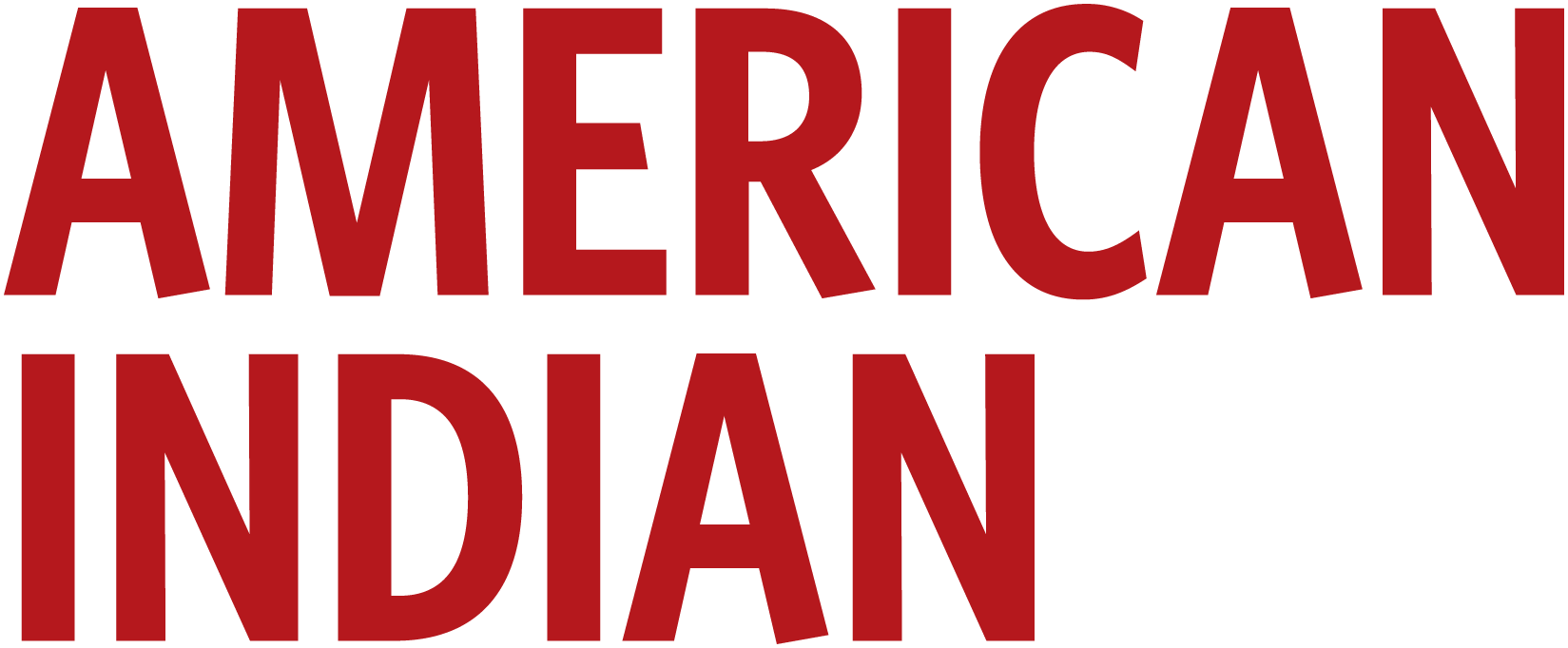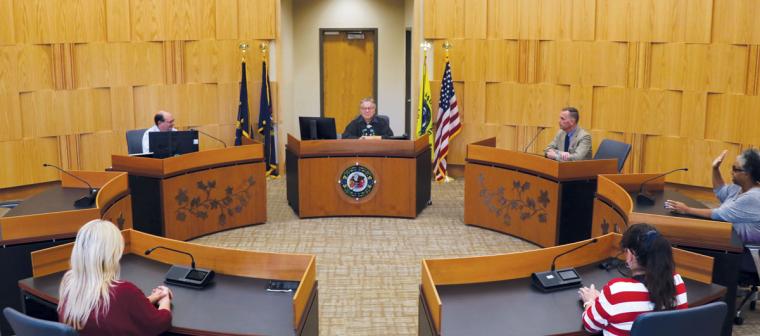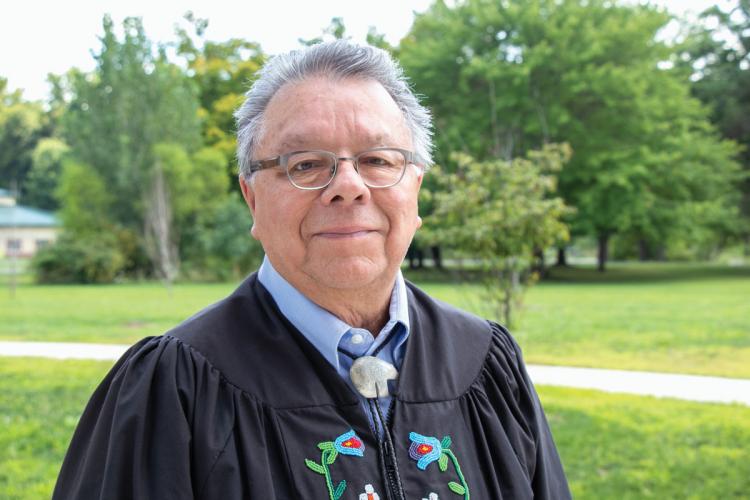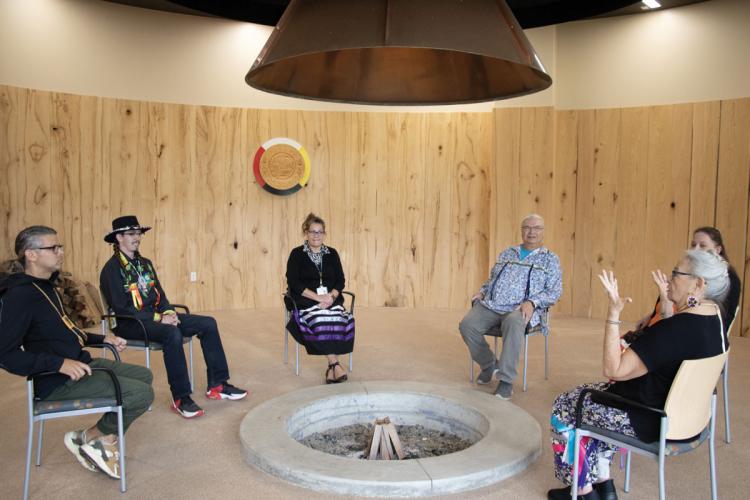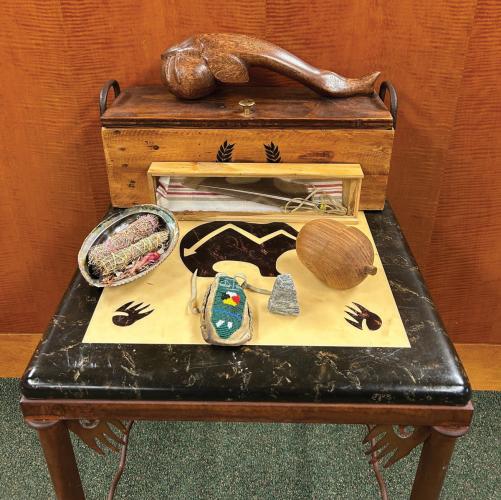In a typical U.S. courtroom, attorneys and their clients usually sit at parallel tables, facing the front of the courtroom, ready to do battle. A judge enters, and an officer commands those in the room to “All rise” before the magistrate takes a seat on a high bench. Then they all sit, and a long debate begins.
Michael Petoskey’s courtroom is quite different. He serves as a chief tribal court judge for the Pokagon Band of Potawatomi in Michigan. In a circle, he sits at the same level as the disputing parties, who can be joined by community and family members to help them come to a resolution. To encourage calm discussions, the Pokagon court house even has a healing room with a fire—a central part of many Indigenous cultures—around which people can gather before or instead of entering the courtroom. The goal is not to win or lose but to avoid a legal dispute by coming to a peaceful agreement that will help restore community harmony.
A member of the Grand Traverse Band of Ottawa and Chippewa, Petoskey said, “At Pokagon, it’s just the way people always did things. Tying people together with good values and bringing them together as human beings is more effective than an adversarial situation.”
The Pokagon Band of Potawatomi is one of several American Indian tribes across the United States that have been returning to traditional Indigenous peacemaking practices for conflict resolution. Those who participate are referred from courts, social services departments, police or even families.
Petoskey said for many years Native traditions like peacemaking fell into disuse for a number of reasons, including federal policies that took tribal lands and limited sovereignty in federal courts. He said the suppression of Native languages and the boarding school era of forced assimilation aided the collapse. However, he said, “We are now in an era of cultural revitalization, and peacemaking is one aspect of this revitalization.”
In the United States, some 400 tribes have their own justice systems. While traditional peacekeeping laws vary in some respects from tribal nation to tribal nation, they are generally less focused on the concept of individual rights and more on wider community values of “responsibility, relationship, reciprocity and respect,” said attorney Brett Lee Shelton (Oglala Lakota). He leads the Indigenous Peacemaking Initiative at the Native American Rights Fund (NARF), which for the past decade has been promoting Native negotiation methods to settle disputes that range from child custody battles and probate to wrongful death. NARF maintains a reference library of written peacemaking materials, facilitates trainings of qualified peacemakers and provides technical and legal assistance to tribes as they develop and implement peacemaking into their modern governmental models.
“A dispute is seen as a community issue,” said Shelton. “We are looking at ways disputes were resolved for thousands of years, allowing people to continue to live together in community.”
At the heart of peacemaking negotiations is the talking circle of affected persons—extended family and community members, each of whom has a responsibility to weigh in on the issue and seek solutions. A selected “peacemaker” from the community is charged with overseeing the proceedings, which typically include the use of a “talking piece,” a stick, stone or other object that is held by the person who is speaking to ensure that they are not interrupted. Peacemakers can range from elders to youth depending on how the community wishes to handle the case and can use different techniques. For example, in the Chickasaw Nation Peacekeeping Court (Nanna alphi’sa ishtaa-asha ikbi), the peacemaker “shall have authority to use tribal cultural teachings and customs, including present-day religious teachings, if the peacemaker reasonably believes this will further the objective of voluntarily resolving a dispute.”
For tribal courts that are often underfunded, traditional methods of settling disputes have proven effective, especially in child welfare cases. Shelton said it just makes sense to not have parents “destroy one another” in court and instead try to work together with input from other family members. In 2021 he and attorney Lauren van Schilfgaarde coauthored “Using Peacemaking Circles to Indigenize Tribal Child Welfare,” a Columbia Journal of Race and Law article in which the authors call for an end to child welfare policies that were “explicitly aimed to exterminate Indigenous culture and disrupt tribal cohesion. … The [Western] legal concept of ‘family’ is rooted in a property construct in which the rights are exclusively held by the parents to provide ‘care, custody, and control.’” By contrast, Native tribes perceive an issue, particularly one related to child welfare, as “evidence of community imbalance,” so the community is obligated to respond. “Through the circle, family and community can complete their natural reciprocal relationship,” the article states.
Indigenous peacemaking techniques are also helping in juvenile offense cases. “The thinking is that a young person has done something wrong, and this is because there are relationships in their life that have been failing them,” Shelton said. “The goal is to heal that relationship or fill a gap in their support network.”
State and federal judges have begun using such approaches in their courtrooms. In Michigan this can be traced to a forum between state and tribal judges in 1992 organized by Michigan Supreme Court Justice Michael Cavanagh to avoid jurisdictional conflicts and form strategies for collaboration. “Cavanagh said to us, ‘We know we will learn more from you than you will learn from us,’” said Petoskey.
Michigan State Court Judge Timothy Connors became convinced of their effectiveness during the 1990s after observing Petoskey use them in tribal court cases, including interfamily disputes. Connors asked for Petoskey’s mentorship to help him apply it to state court cases, such as those of noncompliance with the Indian Child Welfare Act that gives Indigenous families priority in adopting Native children.
Connors said the reason state courts are following Indigenous peacemaking models is because they work. In a 2016 Judges’ Journal article, the Alaskan Kake Tribe reported a 97 percent rate in sentence fulfillment compared to 22 percent in the state court system.
Connors recalled a state court case wherein a shooter had previously been sentenced to 12 years for attempted murder. After two years of time served and during a retrial, the victim called for leniency and a peacemaking process led to a different resolution.
“I was able to tell him how I was harmed, and I got to understand what was going on with him and how he has been hurt by all this,” the victim wrote to the court. “The meeting helped both of us, and I believe he truly takes responsibility for his actions and is sorry and that he should be able to go forward and live his life without any more burdens.” In the end, the shooter was set free.
“Just allowing the circle to happen at all made this possible,” Connors said. “Both parties have moved on with their lives and are now productive members of society.”
Petoskey said he helped Connors set up his peacemaking program based on the underlying philosophy and values of Native cultures and Indigenous world-views regarding justice. Although not of Indigenous heritage, Connors has served as a judge for the Little Traverse Bay Bands of Odawa in Michigan and has walked the fine line between cultural borrowing and cultural appropriation. Appropriation is when one group takes elements of another culture without permission, reciprocity, compensation or understanding the nature of the cultural elements. “Cultural appreciation, not appropriation, is our sacred responsibility,” Connors said.
Shelton said to avoid cultural appropriation, non-Native judges and mediators should not use rituals or ceremonies. He said Connors has “done it right and with the blessing of local Native people.”
A new generation is set to carry on this age-old tradition. Carson Smith (Choctaw), a second year Stanford Law School student, helped establish a peacemaking circle at her school’s Native American Cultural Center. Rather than going to court, lawyers, administrators and students came together to discuss why buildings on campus continued to carry the name of 16th-century Spanish friar Junípero Serra. He created the California mission system that forced Native people to convert to Christianity, labor for colonists and relocate, yet Pope Francis declared him a saint in 2015. Following a series of shared story-telling sessions, Serra’s name was removed from most campus locations in 2018, and Stanford’s Clayman Institute for Gender Research was later renamed to honor psychologist Carolyn Lewis Attneave, a Stanford alumni of Delaware tribal ancestry who founded the field of Native American mental health.
Smith said she sees the Indigenous Peacemaking Initiative as a means to not only help resolve conflicts but reinforce tribal nations. “Any pathway that can serve the well-being of our tribal citizens and strengthen the ties in our communities also strengthens our sovereign powers,” she said.
